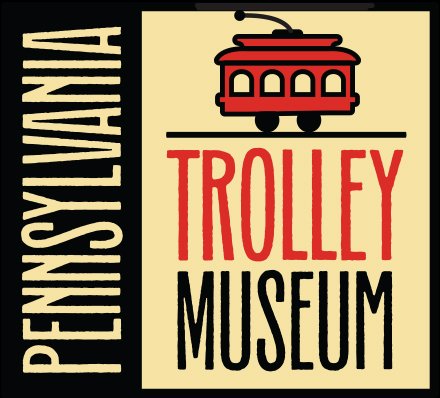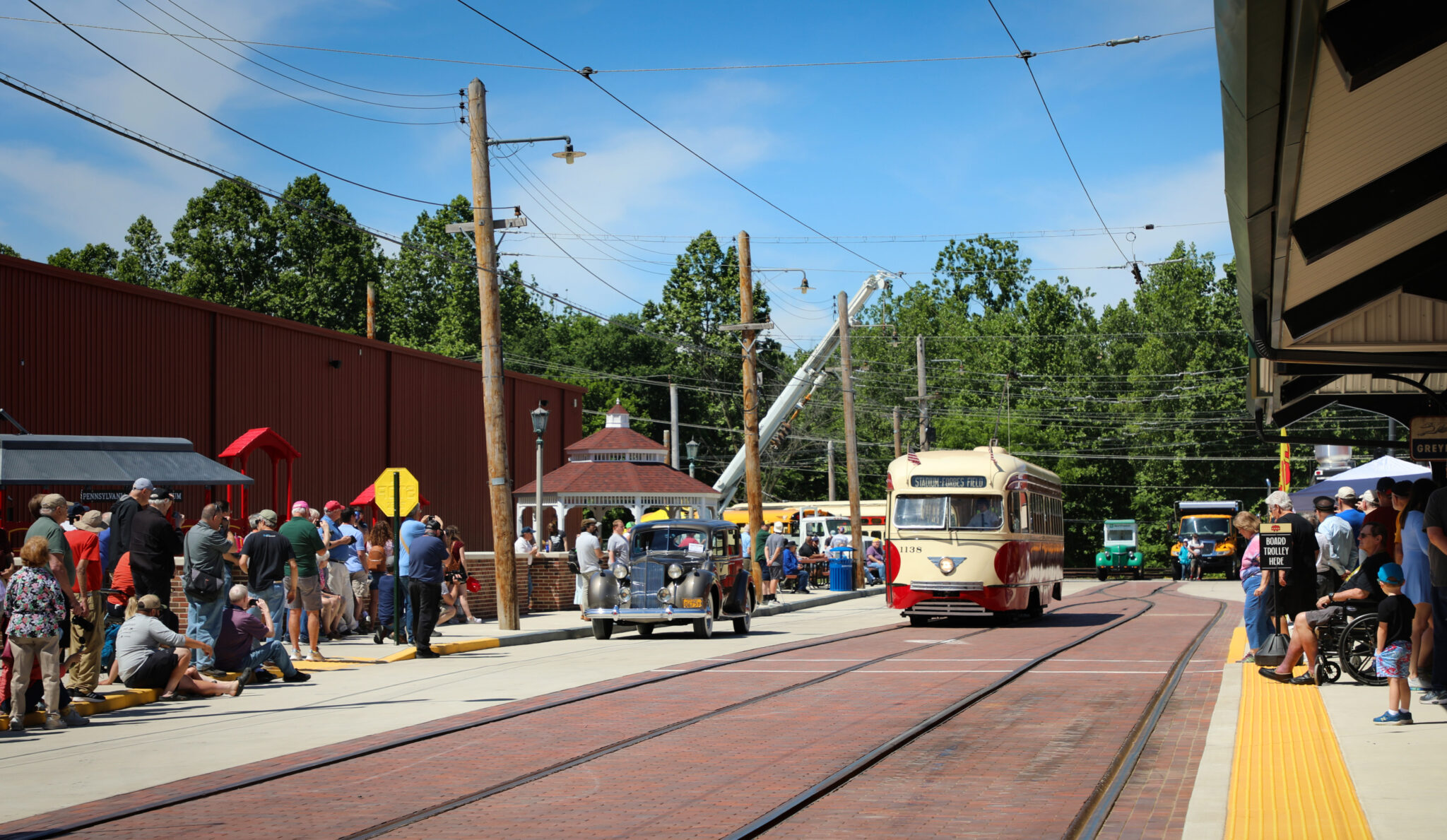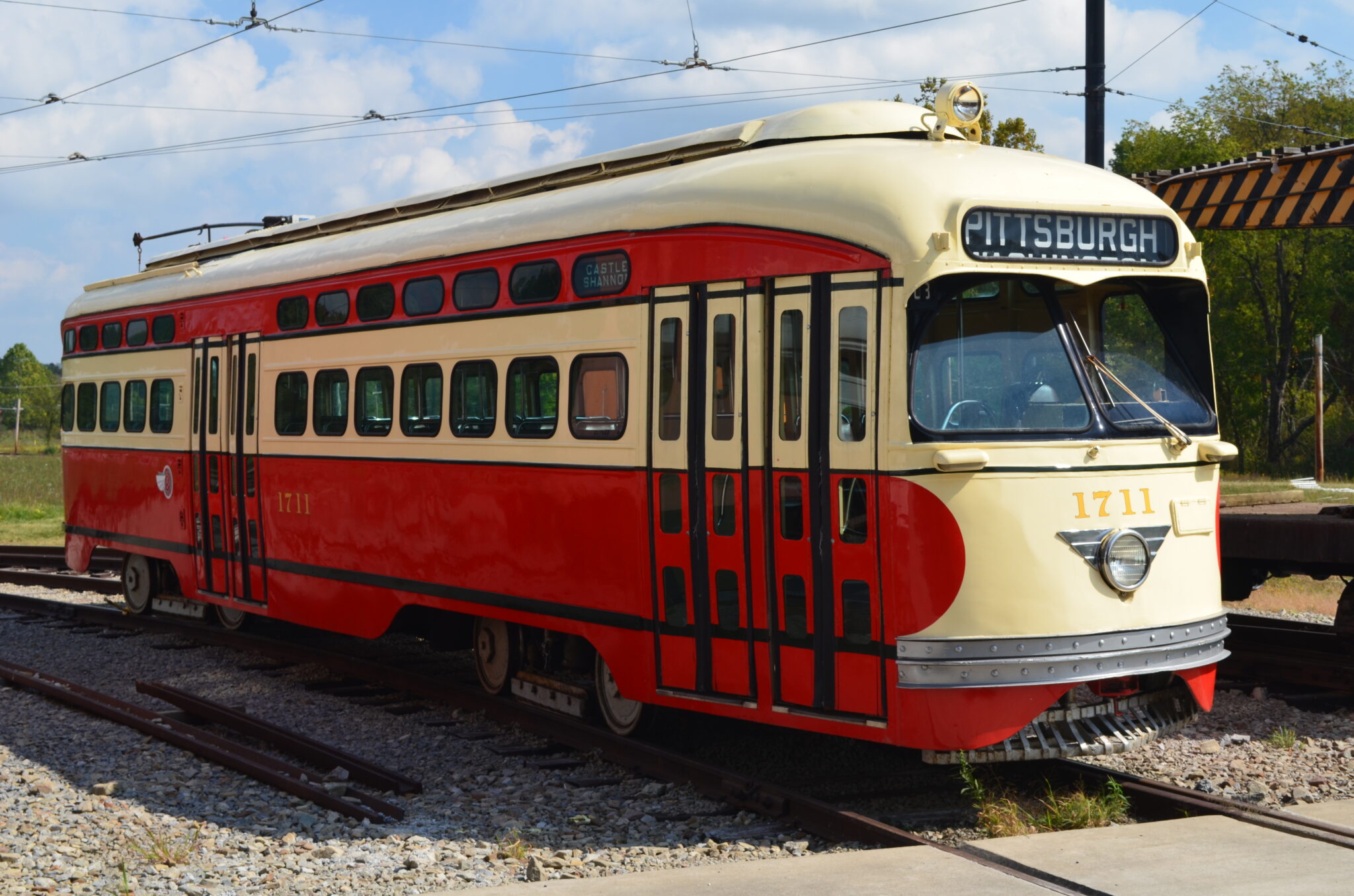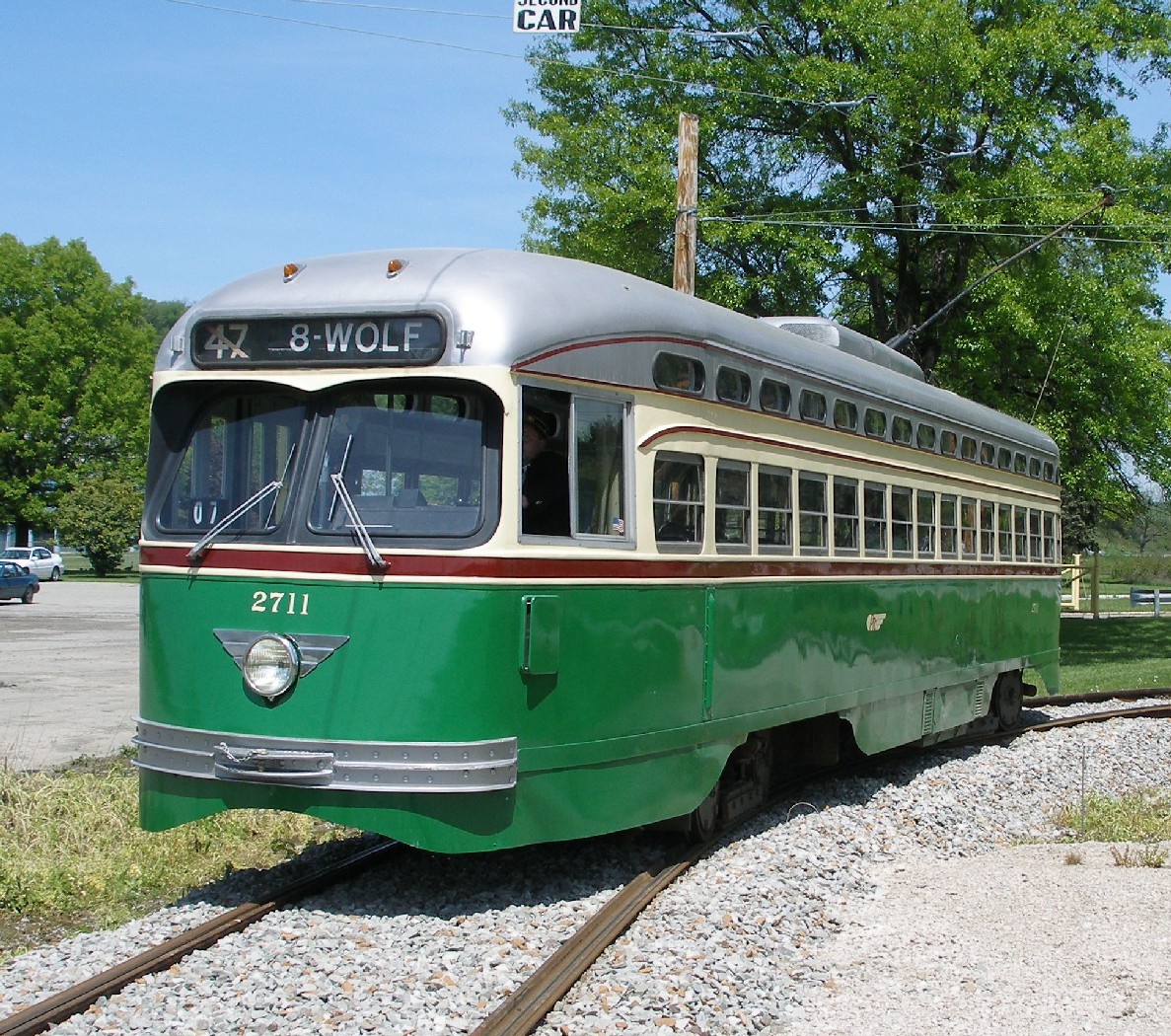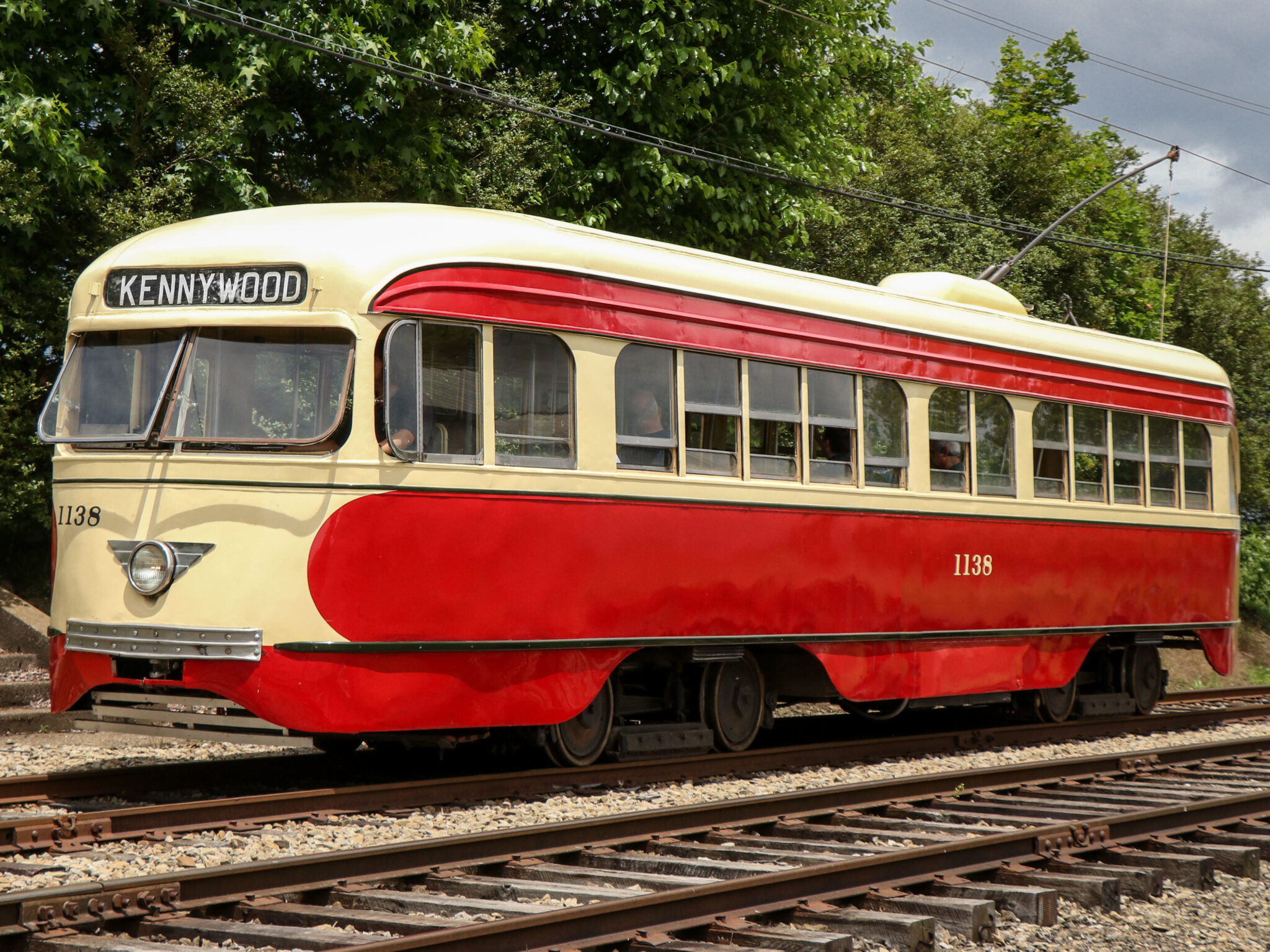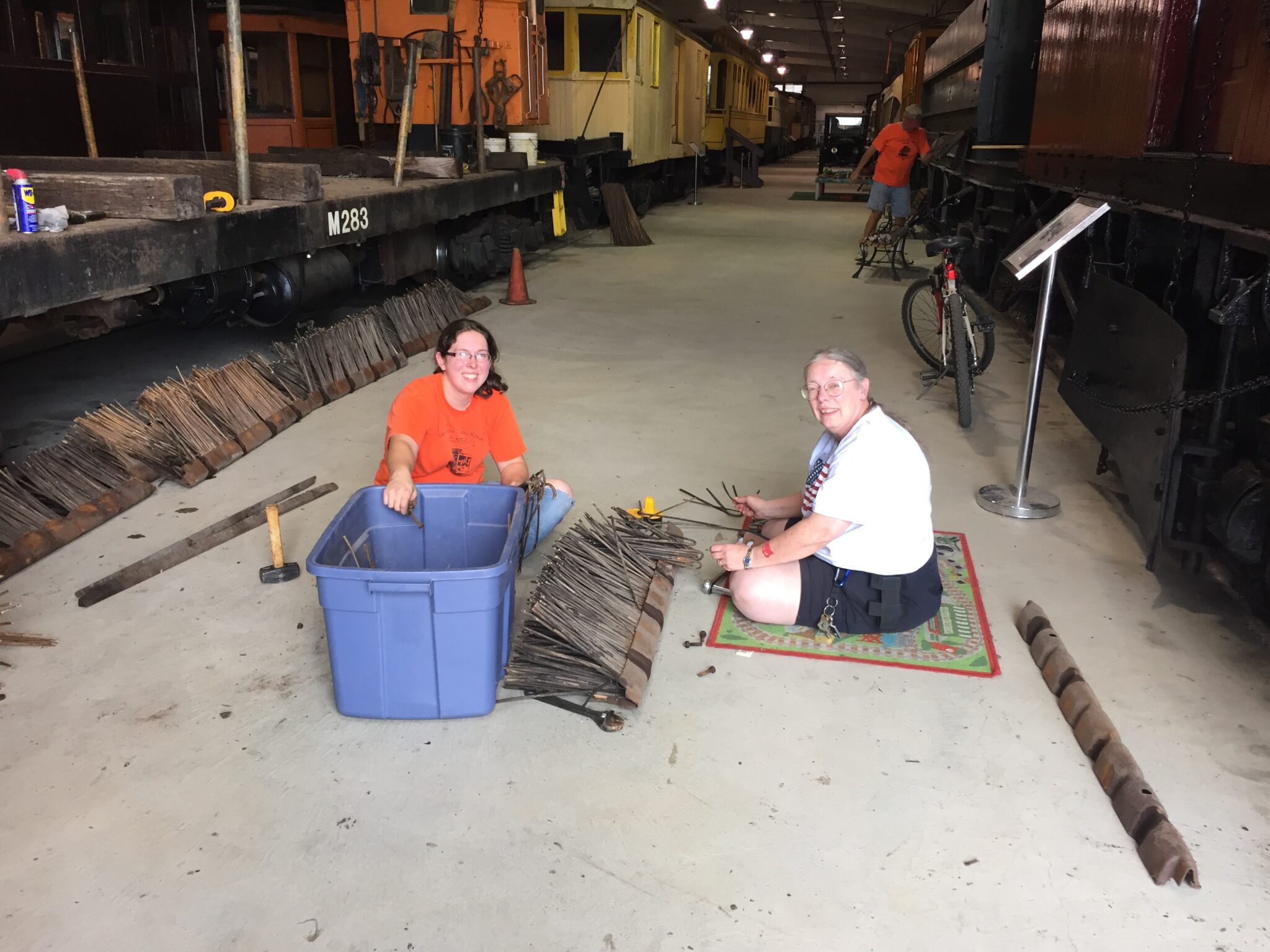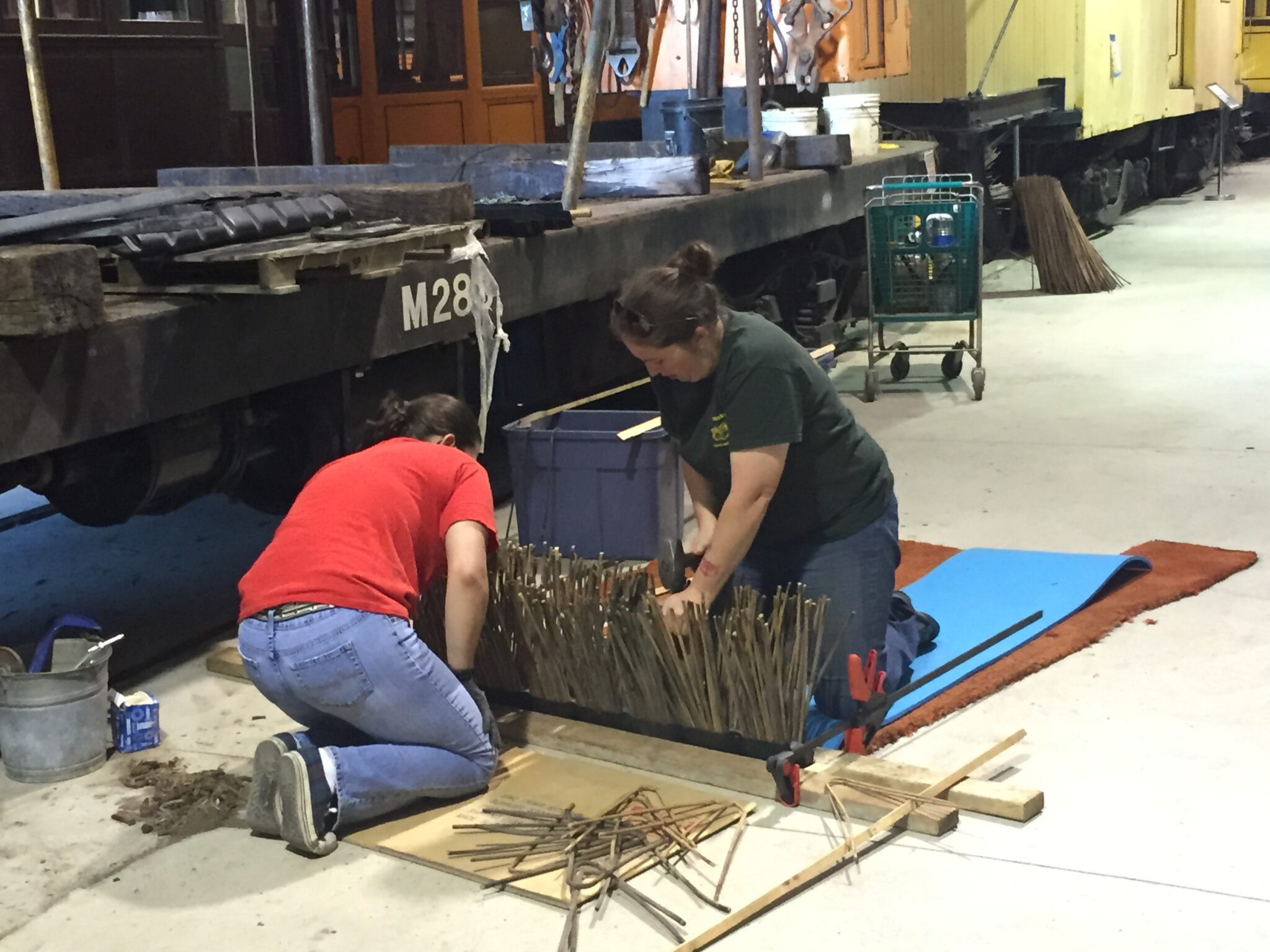Larissa Gula
On February 7th, 2024, the Pennsylvania Trolley Museum (PTM) turned 70 years old. Earlier this year, members and volunteers celebrated the occasion in person with trolley rides (of course!), cake, and a special Trolleyology about the PTM’s journey through the decades.
Regular readers by now know that we’ve also been writing about our history here on our blog! Our first post reflected on the 1940s and 1950s (i.e. the founding years); our second on the 1960s and 1970s; and the third on the 1980s and 1990s. Today, we’re finishing our ride back through time, and writing about the milestones we reached in the 21st century!
The 2000s – Growing Into The New Century
A Bigger & Better Museum
A well-known phrase perfectly describes the PTM in the new century: bigger and better – in more ways than one!
Visitor & Staff Growth: Firstly, as the PTM itself grew, so did visitor numbers; that meant our paid team could grow, too. Specifically, we added a full-time Visitor Services Manager position in the early 2000s.
In 2009 we also welcomed a very special addition to the team: Frank J. Sprague, AKA Frankie the cat. Named after the American inventor, our best guess is that Frankie made his way to our museum after being abandoned by a previous owner. He must have decided that living outdoors wasn’t his style, because he opted to spend the next nine years roaming between our Restoration Shop, offices, and Visitor Education Center. For almost 10 years (until he crossed the Rainbow Bridge), guests would not only ask us if they could see a particular streetcar during their visit – they would also ask where Frankie the cat was.
Track Work: We also continued to expand our trolley line eastward in 2003, and our second loop (named the McClane Loop) was fully installed in 2004.
Following the completion of the McClane Loop, we could properly offer guests a four-mile round trip up and down our track. And with two loops installed, we could run single-end cars regularly. The loops also allowed for more frequent Park ‘n’ Ride services to the Washington County Fairgrounds, making this special summer event even more accessible to riders.
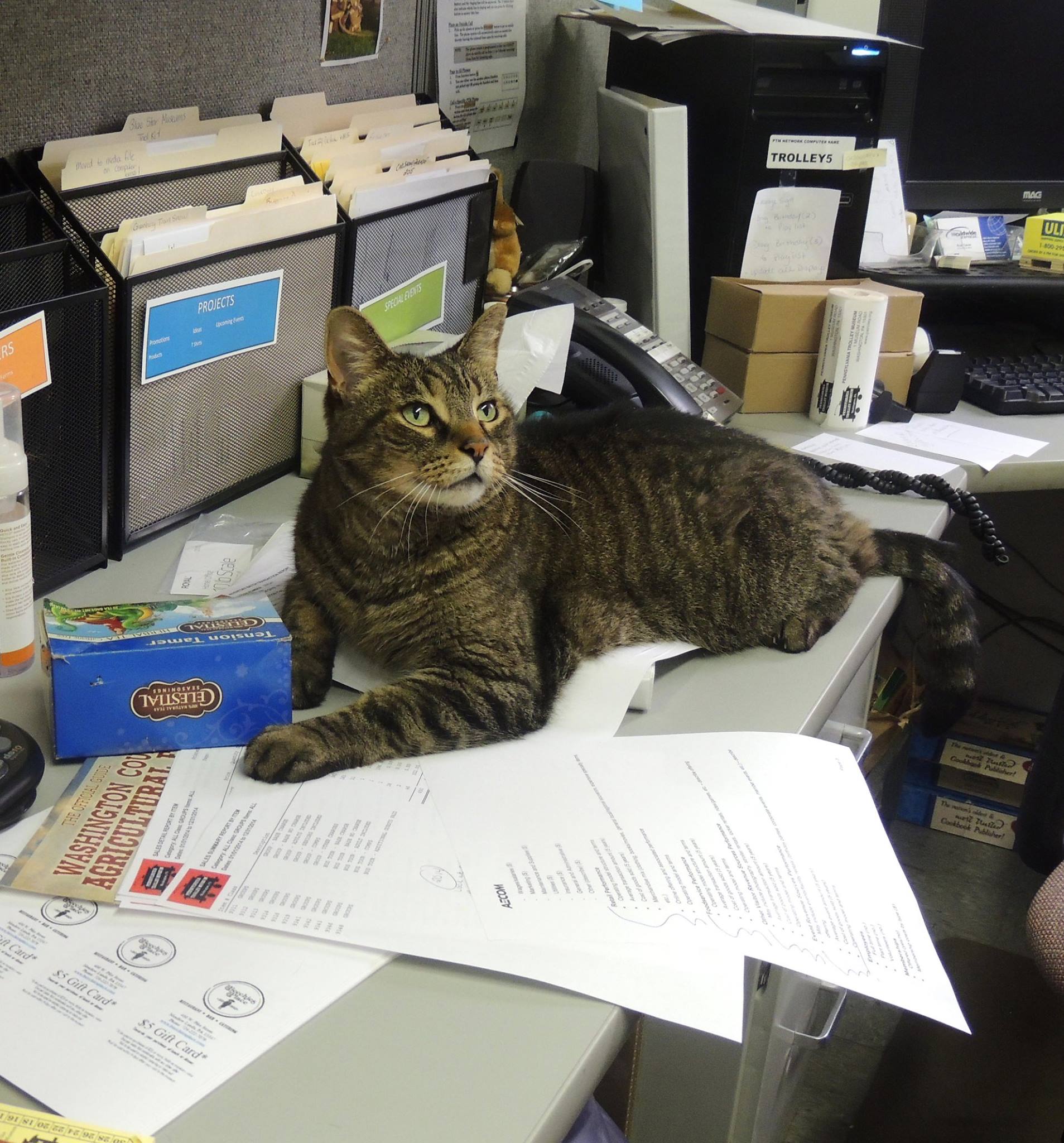
Frank the cat “helping” with paperwork in the office
Speaking of the Washington County Fair: in the 2000s Cooper Crouse-Hinds (now known as Eaton Cooper Crouse-Hinds) allowed us to use their large parking lot for Park ‘n’ Ride services. The organization also donated over 13,000 square feet to us for our Archives and parts storage at this time. We cannot thank them enough for their support, as both the additional parking and storage contributed to our growth in the new century.
Future East Campus/Trolley Display Building: After completing work on our main line, we could put more time and energy into developing the future East Campus. The project got a boost when over 170,000 cubic yards of fill material was donated by Chartiers Township from their Arnold Park project; this donation went towards the construction of several East Site structures.
The first East Campus building was the 28,000 square-foot Trolley Display Building – something that was very needed to both display our collection and to store it indoors in a protective environment. Construction began in 2003, supported by foundation grants, federal transportation enhancement grants administered by the PA Department of Transportation, and individual donations.
The completed Trolley Display Building had space for more than 30 cars, and included another maintenance shop to service and maintain our operating fleet. In the summer of 2004, volunteers tackled the challenge of moving our collection into the building itself. Remember that many of these cars were not (and are not) operable; so this move was no small undertaking!
Little did we know that this herculean effort would be completed with little time to spare, as the remnants of Hurricane Ivan caused extensive flooding in September 2004. While other parts of our property suffered flood damage, the new Trolley Display Building – and the beloved collection housed within it – did not.
The new Display Building opened to the public in 2005; and a substation building was added to the East Site this year as well.
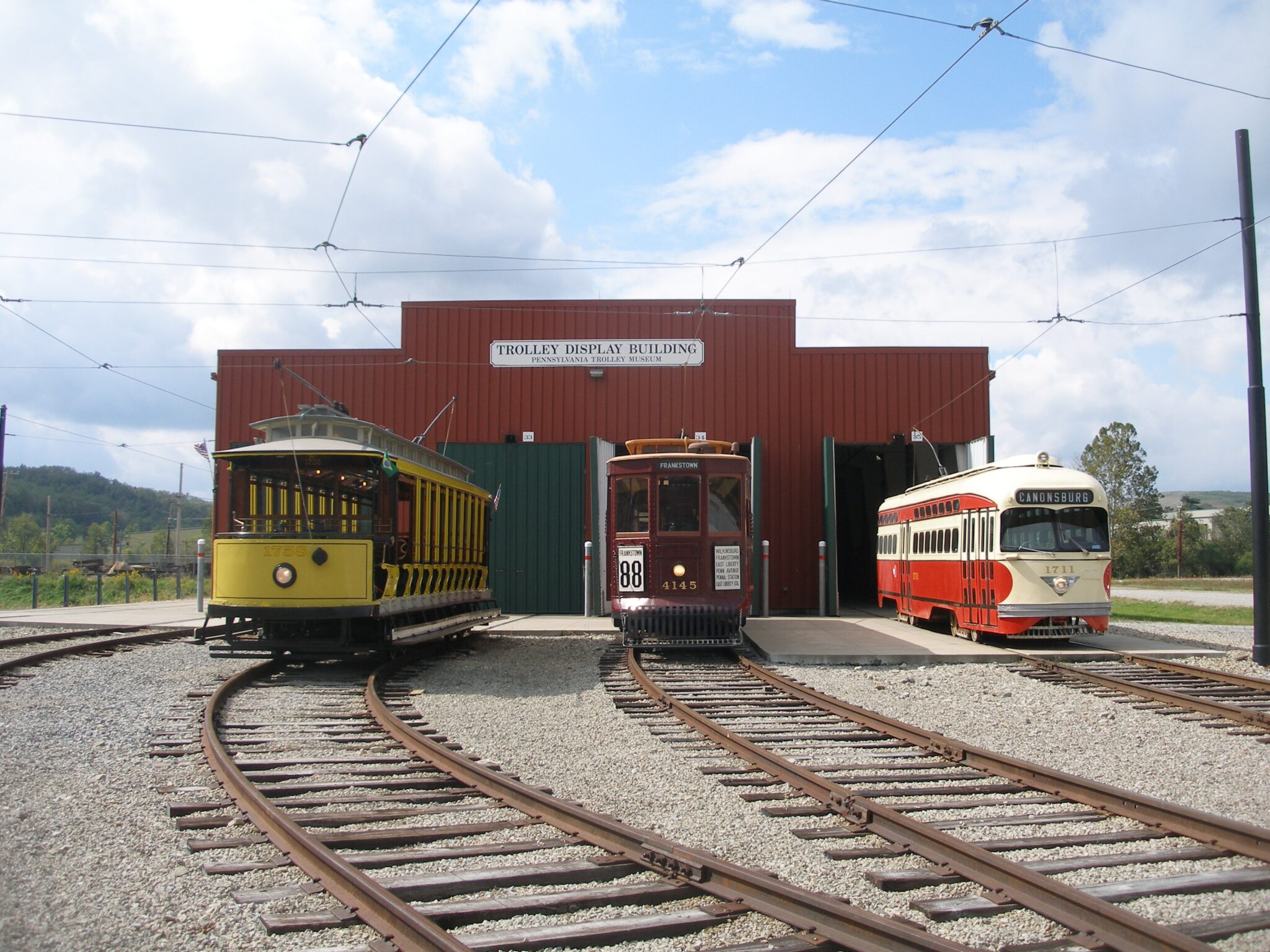
A different kind of energy would also arrive at the PTM before the end of the decade. In 2009, a photovoltaic solar energy system was installed using an Energy Harvest Grant awarded by the PA Department of Environmental Protection. This installation made us the first museum in North America to partially power transit vehicles via solar power!
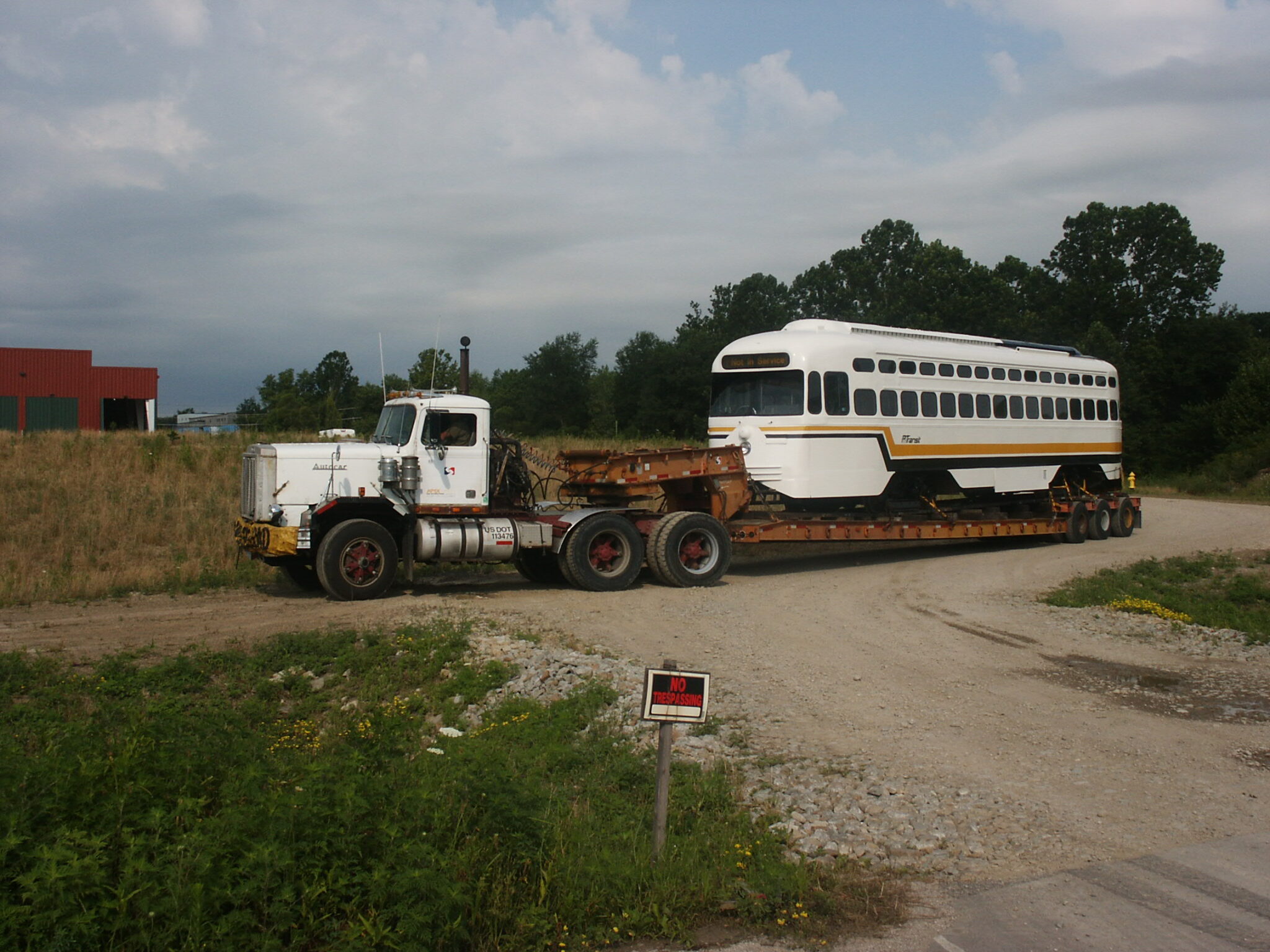
Car 4004 arrives at the new Trolley Display Building
New Acquisitions in the New Millennium
Our collection didn’t grow quite as much in the 2000s as it did in decades past, partially due to fewer opportunities to acquire cars and partially because we did not want our collection to outgrow our indoor storage capacity. The cars we did welcome, however, were all unique additions to our fleet for one reason or another:
- PATransit 4004 arrived at the PTM in 2004. This was the last Pittsburgh PCC to operate in revenue service in September 1999, ending 63 years of PCC car operation in the Steel City. 4004 was donated to us by the Port Authority of Allegheny County (PAT), who generously stored the car until our Trolley Display Building was completed (as well as repainted it before delivery).
- Philadelphia Transportation Company 8042 and Monongahela West Penn 250 both came to us in 2005. 8042’s arrival was made possible by the sponsorship of the Electric City Trolley Museum in Scranton, PA; while 250 was donated to us by the Shore Line Trolley Museum in East Haven, CT.
- Arguably our most recognizable and beloved streetcar, Rio de Janeiro 1758, came to us in 2006. Note that this beautiful open car did not actually enter service until 2011, following extensive work to re-gauge it to run on our 5’2-1/2″ gauge track. Today this streetcar is a favorite among our visitors, who regularly compare it to the trolley featured in “Mister Rogers’ Neighborhood” and “Daniel Tiger’s Neighborhood”.
- In 2009, three more cars came to us after a different organization dissolved its collection. The former Trolleyville USA museum had closed down in 2005; and while efforts were made to preserve the collection under a new name (the Lake Shore Electric Railway), plans for a new museum never materialized. The collection officially was auctioned off in 2009; and we were able to save and bring home Pittsburgh Railways Co. 4145, Cincinnati Street Railway 2227, and the “Toledo” private car.
Major & Noteworthy Restorations
Given the size of our collection, our volunteers have always stayed busy restoring the PTM’s preserved streetcars. The work done in the 2000s is especially worth mentioning!
During this decade we had the pleasure of working with Adtranz (and then Bombardier Transportation) multiple times, as they were a corporate partner:
- In 2000, Philadelphia Transportation Company 2711 was moved from Philadelphia to the Adtranz factory in Elmira, New York. Their crews restored the car to its original 1947 appearance, as well as modified its interior to make it wheelchair accessible.
- In 2001 a second PCC, Pittsburgh Railways Co. 1138, was also heavily overhauled and rehabilitated through the generosity of Adtranz in their New York facility.
- Additionally in 2001, Pittsburgh Railways Co. 1711 was sent to the New York facility for a complete structural rebuild. During that process, the interior was restored to its original 1949 appearance.
In addition to this generous support from Adtranz, we were able to roll out not one but two restored streetcars during the 2000s:
- The first car to roll out was Red Arrow Lines 14. When reflecting on this project, our volunteers note that what began as a paint job and some body work ultimately became the most complex restoration they’d tackled to date. The “simple” project began in the summer of 1997; and 14 finally rolled out of our Restoration Shop in June 2004.
- The second roll out was long in the making! Pittsburgh Railways Co. 4398 had been out of service since 1977. While this restoration wasn’t as complex as 14’s, the scope of the work was simply too large for our limited volunteer workforce at that time. Work stalled outright in 1988, and this car sat partially completed inside our shop until 2004. That’s when its restoration was reinitiated, supported by new funding, new volunteers, and a full-time paid contractor. 4398 was rolled out in 2008.
The 2010s – Celebrating the Past & Laying the Tracks for the Future
Additional Staff & Programming Growth
Visitor growth did not slow down in the 2010s. In 2012 alone we welcomed over 30,000 visitors from around the world (an 11.9% increase in attendance compared to the previous year!).
Park ‘n’ Ride service to the Washington County Fair also saw incredible growth during the decade, and we typically carried thousands of passengers during the eight-day-long annual event.
Family-friendly programming also thrived during this period. Signature events like Bunny Trolley, Pumpkin Patch Trolley, and Santa Trolley continued to delight guests, while new additions (such as Daniel Tiger in 2016) offered a fresh event for families to enjoy. Scout workshops were added to our programming as well, with the establishment of the Biannual Boy Scout Merit Badge Workshop in 2016.
To help support expanding programming and events – and to help enhance the overall PTM experience – our team expanded again during the decade: a Business Manager and a part-time store clerk joined our paid staff.
We’d be remiss if we didn’t mention our volunteers, who have always made our success possible throughout our history. During an average year from this period (such as 2012) over 150 individuals contributed more than 30,000 volunteer hours to our operations and restorations – an impressive testament to their passion for preserving transit history!
Celebrating 50 Years of Service
In June 2013, we reached a significant milestone: 50 years of being open to the public!
When writing about the anniversary, the Pittsburgh Post-Gazette perfectly summarized our growth and achievements to date: “From its humble beginnings – a forlorn field with three trolley cars and cows for neighbors – to a complex of three buildings and more than 50 trolleys, the Pennsylvania Trolley Museum has a lot to celebrate during this weekend’s ‘All the Streetcars You Desire,’ marking the museum’s 50th anniversary.”
During ‘All the Streetcars You Desire’ we expanded on our Classic Car Show event, turning June 22 and 23 into a weekend-long celebration. We organized parades of the historic trolleys in our collection; and special guests Mr. McFeely from Mister Rogers’ Neighborhood and Pittsburgh artist Linda Barnicott each joined us for the festivities!
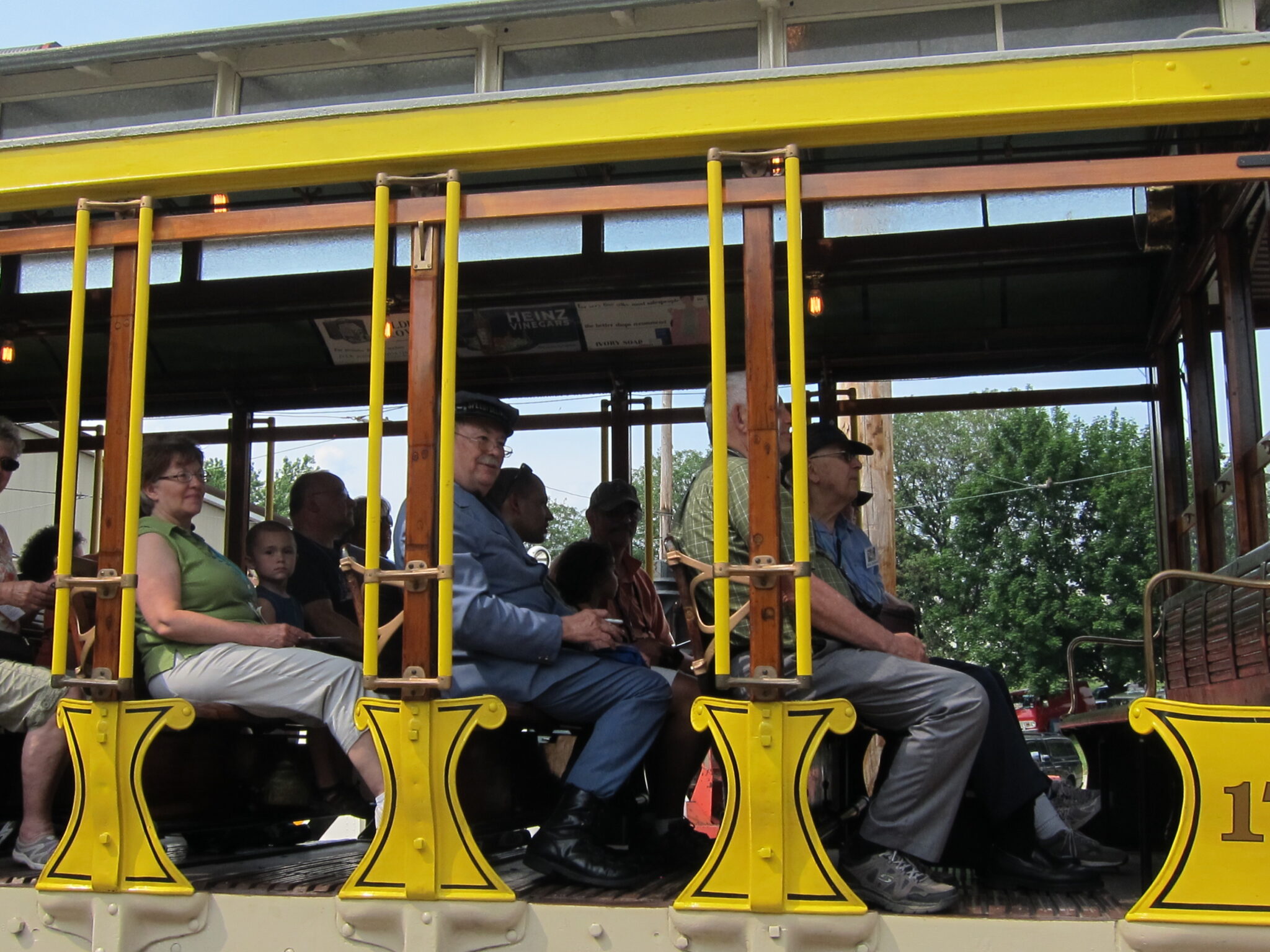
Mr. McFeely riding the open car at the 50th anniversary weekend
Enhancing the Fairgrounds Experience
As mentioned earlier, ridership to the Washington County Fair went up during this time. To make the ride to the Fair even better, we developed a three-year-long, three-phase project to improve the Fairgrounds platform.
Phase 1: In 2018, just weeks before the Washington County Fair, a new Fairgrounds entrance bridge was officially put into service, improving accessibility for visitors.
Phase 2: Almost immediately following that fair’s conclusion, museum volunteers went back into work mode and began removing the overhead wire so that we could get to work on building an enhanced platform. This platform was completed in time for the 2019 Fair.
Phase 3: During the final phase of the project, we would install a canopy over the south end of the new platform. (More on this later!)
“On Track for the Future”
With the Trolley Display Building open and operational at our East Campus location, we continued to plan and work on the development of the site. This included work on our Artifact Preservation Building (APB), which provided much-needed indoor storage for parts, mobile equipment, and even a few streetcars in our collection.
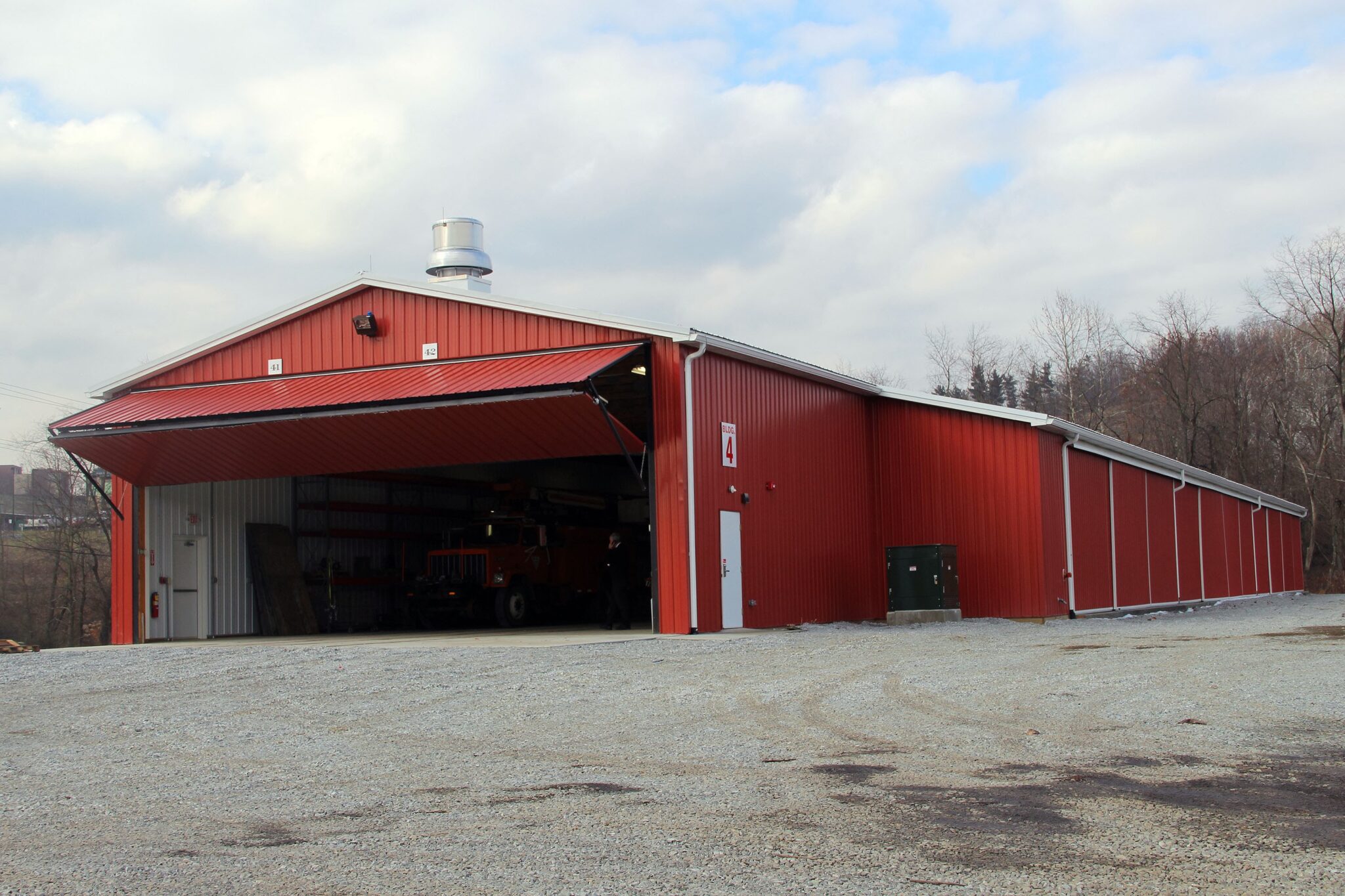
Artifact Preservation Building exterior (2013, J. Polyak photo)
We also continued to run a major fundraising campaign during this period called On Track for the Future. This fundraising was essential in the construction and expansion of the East Campus, which would improve our educational programs and build on our current visitor experience. We used the campaign to raise funds for:
- A new Welcome & Education Center (with a visitor center, educational exhibits, classrooms and event rooms, a ticket kiosk, offices, and store)
- Volunteer Boulevard (then named Trolley Street – the street would better connect the visitor entrance with the Trolley Display Building)
- A new entrance road and parking lot
- Enhanced educational programming and exhibits
In 2018, we made significant strides in the campaign and hit major fundraising milestones. A $25,000 grant from the Washington County Community Foundation (WCCF) allowed us to hire the Carnegie Science Center to finalize the floor plan and exhibit design for a state-of-the-art Welcome & Education Center. And by the fall, the campaign had raised an impressive $12.5 million, nearing its $13.5 million goal – putting us on track to offer a new, even more comprehensive, educational, and enjoyable visitor experience.
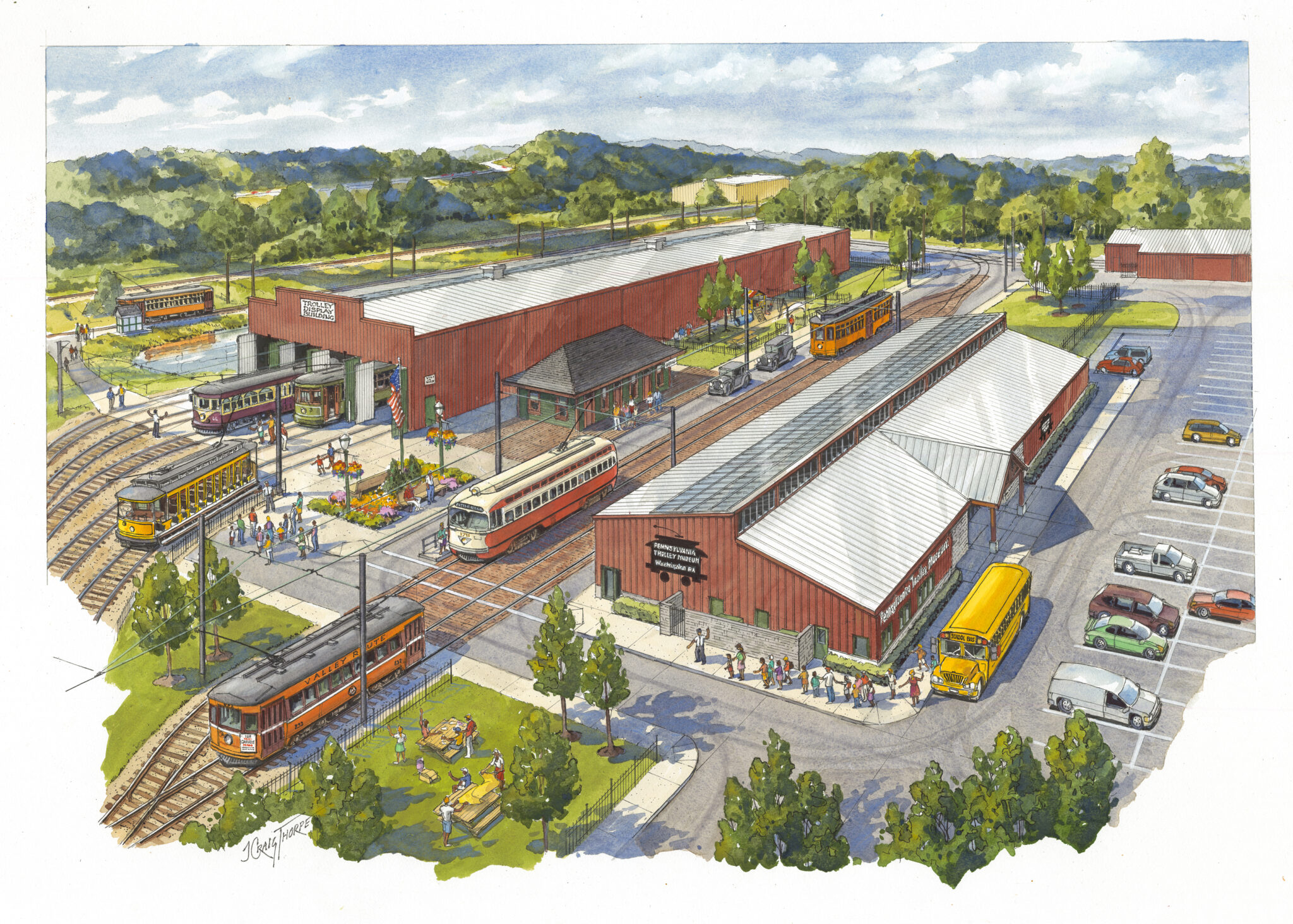
More Streetcars Return to Service
- The restoration of Beaver Valley Traction Company 1, a snow sweeper, was a long-running project; volunteers had worked on the car in stages as far back as 1972. In 2014, the sweeper re-entered service during the annual member and volunteer Winterfest celebration. As is often the case, volunteers found even more to do after 2014, and in 2015 a crew got to work rebuilding the brooms on both ends of the car. These days the sweeper is fully operational and remains on display in the Trolley Display Building.
Bruce Wells photos
- In 2015 something unique joined our collection – not a streetcar, but a station! The Wexford Trolley Station began its journey in 1908, serving as a wooden interurban trolley station for the Pittsburgh Harmony Butler & New Castle Railway. The station survived after the transit company closed by being relocated and repurposed as a post office, antique store, craft shop, and deli. In 2015, the station was moved to its current home at our East Campus.
- Arguably the most notable restoration of the decade was West Penn Railways 832’s. 832 was the second car our founders purchased; but due to being stored outdoors during our early days, the car was inoperable when we first opened our doors. Work on the car was sporadic until 2010, when a Transportation Enhancement Grant was put towards the project. A detailed restoration plan was created, and the car, along with its components, was sent to Brookville Corporation in August 2010 for extensive work. By July 2011, West Penn 832 returned to the museum, where work continued in our Restoration Shop. The trolley had its ceremonial rollout in June 2018 at the Trolley Display Building and even saw limited operation that weekend. However, further adjustments – including wiring fixes and motor rewinding – delayed its full return. Finally, in 2021, West Penn 832 was officially placed back into regular service.
- During the 2018 Western Pennsylvania Trolley Meet, guests enjoyed the surprise debut of our two-car Red Arrow train, featuring cars 14 and 24. Car 24 had been in storage for over 10 years at that point, and not only was brought to operational status by volunteers but was upgraded to run as a multiple-unit train with car 14. This was the first Red Arrow two-car train to run since SEPTA operated them in the 1970s!
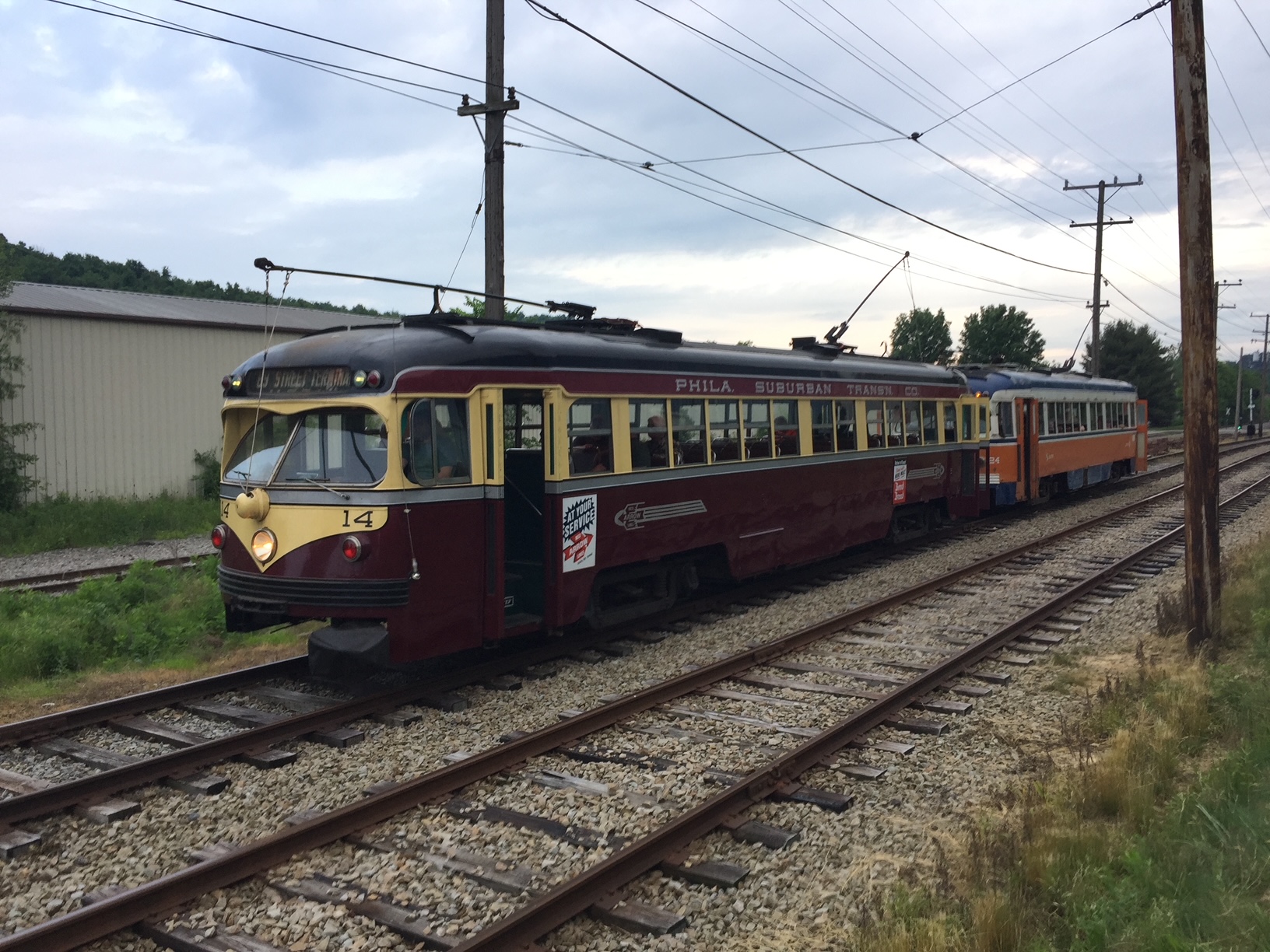
14 and 24 run as a multiple-unit train – Larissa Gula photo
The 2020s
2020 – Progress in a Pandemic
Adapting to a New World: 2020 was the year of the unexpected. Historically, we would close for the winter and re-open in the spring. Come spring of 2020, we stayed closed due to the COVID-19 pandemic. While the physical museum site was quieter than usual, we pivoted (as many businesses did) and developed a more robust virtual presence to stay connected with our visitors, volunteers, members, and friends. (If you’ve ever attended a Trolleyology presentation, you’ve enjoyed and supported a program that came out of our COVID operations!)
By the summer, volunteers – and eventually visitors – were able to re-enter the property. As our volunteers returned to work they followed strict protocols to protect everyone’s safety. It wasn’t easy, but thanks to their dedication and determination, we adjusted to a “New Normal” to host our 2020 operating season.
While it was necessary to adhere to safety guidelines that year, our events were of course impacted by the pandemic. For example, the Western Pennsylvania Trolley Meet – a biannual meet-up for trolley/traction fans and model enthusiasts – could not be hosted in person that year. Undaunted, our staff created a day of “at home” programming for people to enjoy. Representatives from other trolley museums, PTM members, and guests attended the virtual event. (A recording of highlights from that day’s programming is still available online.)
While the West Penn Meet was successfully hosted online, the majority of events had to be canceled entirely, including fan favorites like Santa Trolley and County Fair operations. Despite the setbacks, and despite running on a limited schedule in 2020, we still welcomed quite a number of visitors that year.
Track Work/Fairgrounds Improvements: Despite the challenges of 2020, work on the enhanced Fairgrounds platform continued. Before the official pandemic start date, three vintage 1935 canopy Tee columns – originally from the Pittsburgh & Lake Erie Railroad Station (now Station Square) – were installed at the new Fairgrounds platform by Bioni Drilling. A skeletal steel framework for the roof system was also installed. The steelwork had been refabricated and restored by Camber Corporation, a Wexford-based company, at their plant in Butler.
When volunteers returned on-site, work resumed on the canopy itself. In fact, when we ran our Arts & Crafts Christmas Festival service in October, guests had the chance to see the newly installed canopy for the first time. Some folks even took advantage of the new structure to avoid rain during the event.
This wrapped up the work on the three-phase Fairgrounds improvement project, and the new platform is now used regularly!
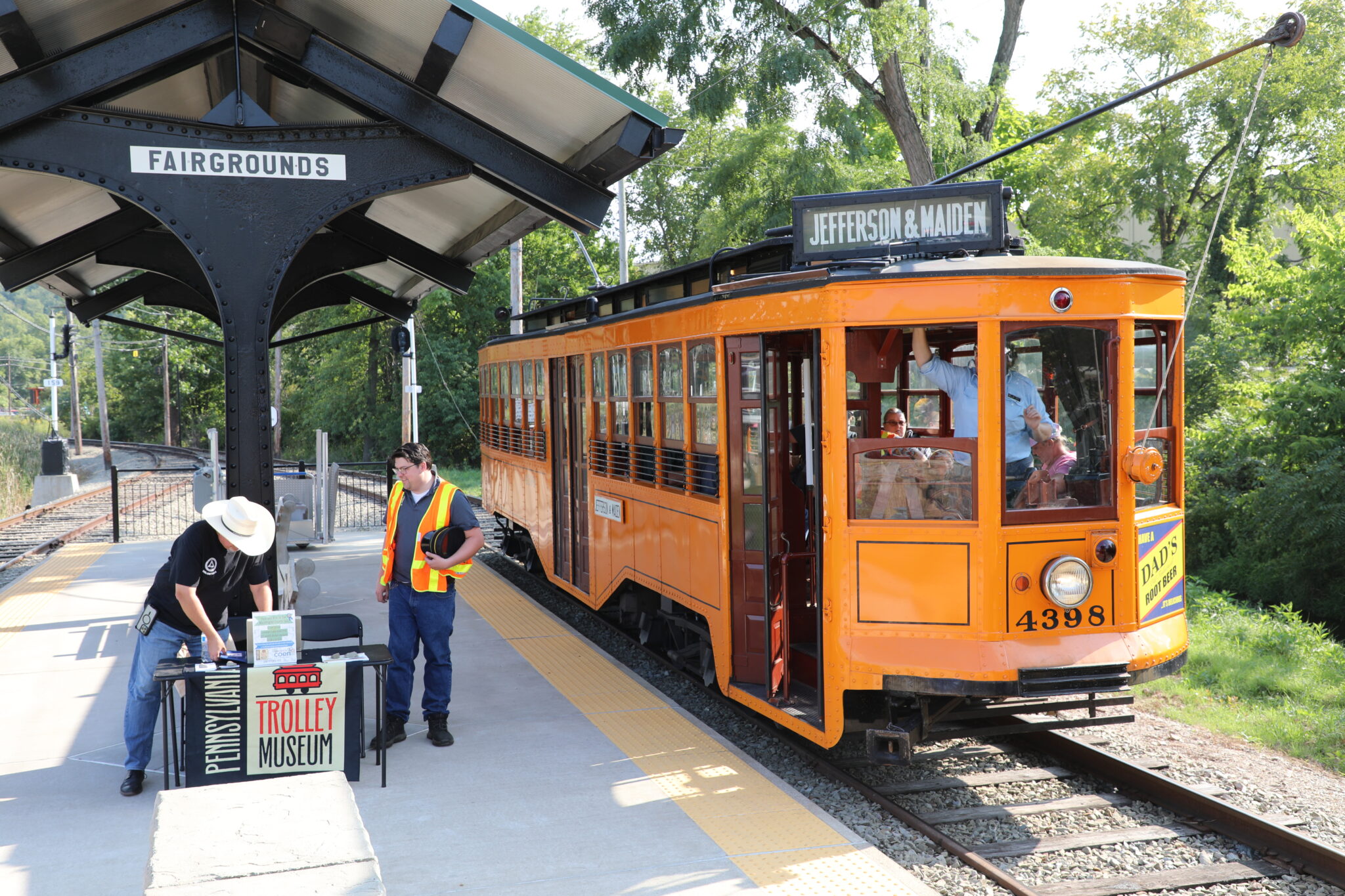
Future East Campus: Work continued on the East Campus Development project as well. Our top priority that year was to ensure the design and specifications were finalized to the point that we could request construction bids. At the same time, the Carnegie Science Center staff collaborated remotely with PTM staff to design the interactive exhibits that became a key part of the Welcome & Education Center.
Archives: In 2020 we found ourselves needing to relocate the Archives from the leased space at Eaton Crouse-Hinds. This meant that the materials previously stored there would need a new home. By December, we knew where that home would be: Reliance Drive.
Located adjacent to our trolley line near County Home Siding, the Reliance building had a long history as the Reliance Electric building. Over the years, it housed electric motor production and overhauls under various owners. The acquisition of this 66,000-square-foot facility opened up numerous opportunities for the Museum.
Immediately the Reliance office area was repurposed for Museum offices. Long-term, this space would provide a climate-controlled environment to store fragile and high-value items from the Archives, including photographs and rare books.
In the factory section, which featured four 30-foot-wide bays each 400 feet long, we established a mix of short-term leases to cover costs and long-term plans for shop and car storage functions.
We especially thank David and Kathryn Black for their financial support of both the acquisition of 320 Reliance Drive and the future buildout of the Archives there (now named the Kathryn & David Black Transit Archives).
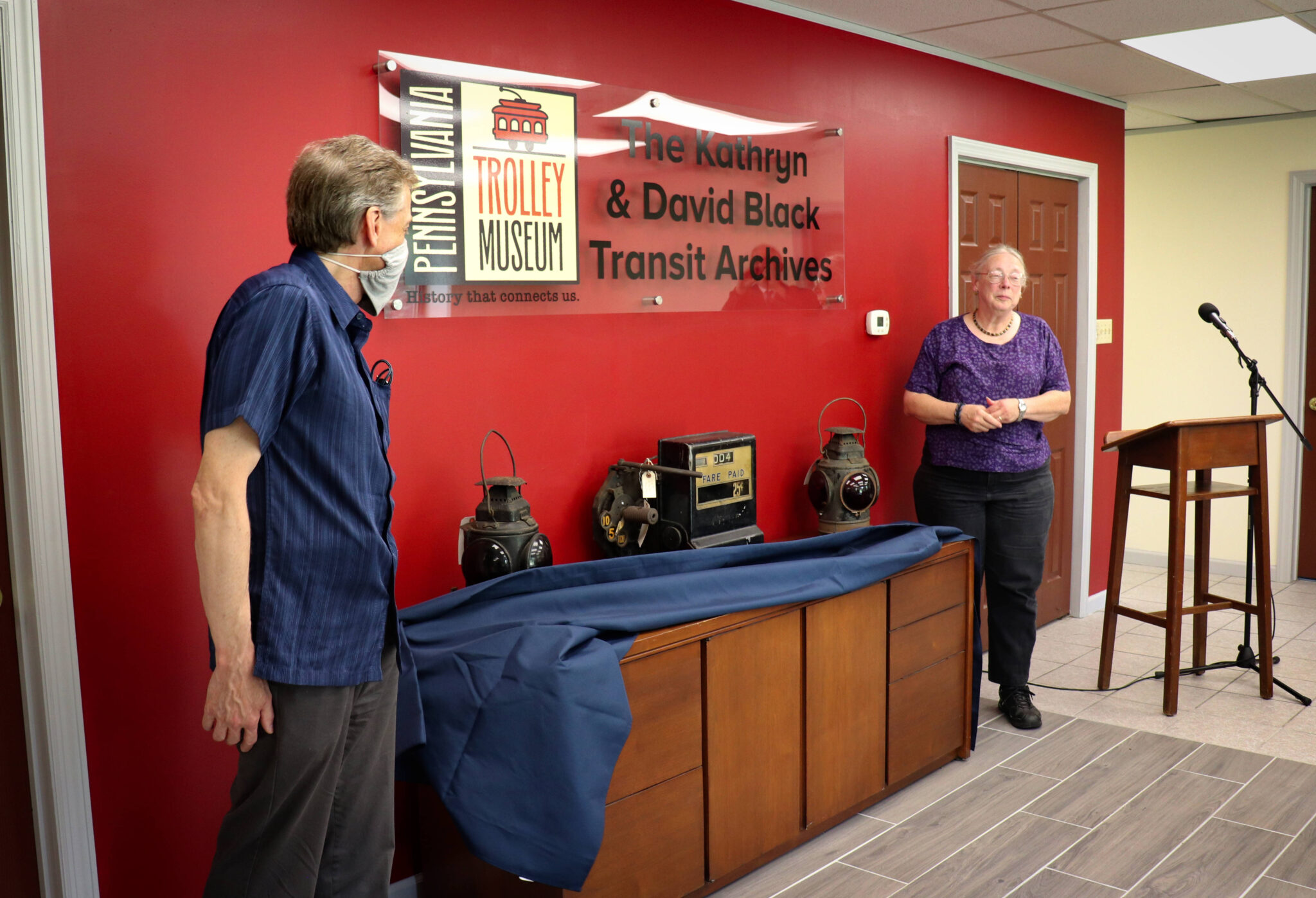
2021 To Today: Back On Track!
2020 was certainly a year for the history books; but in 2021 we were able to begin operating like normal once again! Staff returned to the office; events and programs resumed; and attention was turned to the build-out of the future East Campus. The construction of the campus ran from 2021 until 2023. (You can actually look back at highlights from the construction on our blog!)
The following is an extremely brief summary of how the build-out progressed during those two years:
Trolley Street: A major focus in 2021 was the construction of Trolley Street (now named Volunteer Boulevard). Track was laid; overhead wire was hung; and after ballasting and tamping we began testing operations on the street in early October. (Fun fact: West Penn Railways 832 was the first car to roll down the street.) The necessary concrete work for the street began in 2022; and the final brickwork on Volunteer Boulevard went into place in the summer of 2023.
Additional Track Work: As part of the site’s development, contractors and PTM volunteers completed the track and overhead work needed to connect our main line to our Artifacts Preservation Building (APB).
Other Structures: Today when you visit the PTM you’ll see a gazebo, a fountain, and a playground. Their construction also took place during this period. A masonry contractor also assisted the PTM with brick walls for both the playground and the fountain. The brick wall at the east end of the playground is particularly special; it features embedded Harmony Freight Station stones, which have for years adorned the entrance walkway at what is now our previous Visitor Center. These historic stones were salvaged years ago from the former Harmony Freight Station in Beaver Falls before it was demolished.
New Building: In 2021, the ground was officially broken for the future 21,000 square-foot Welcome and Education Center. Once the steel for the new Welcome and Education Center arrived the next year, we watched the new building go through construction at a rapid pace! By the summer of 2023, we began installing exhibits in the Welcome and Education Center itself.
Additional Solar Power: In 2023, we also installed solar panels atop the roof of the Welcome & Education Center. We now had 800 photovoltaic panels in total between the new building and the Trolley Display Building. Fun fact: they lower our electricity costs by almost $65,000 per year! (You can read more about how the sun powers our trolleys here.)
After two years of construction – and decades of planning – we celebrated the opening of the new 21,000 square-foot Welcome & Education Center with a ribbon cutting ceremony on Thursday, November 9th, 2023! Thanks to the hard work of all involved in the project, we were able to spend 2024 – our 70th anniversary year – operating out of our new building for the first time, introducing the public to the “new” Pennsylvania Trolley Museum.
Collection Updates:
Given how the PTM itself grew in the 2020s, it was only appropriate that our collection grow with it; and three new cars came to call us home:
- Pittsburgh Railways Co. 1713 arrived in the summer of 2023. We chose to preserve this car because it was one of the PCCs that wore a special paint scheme in the 1980s. This particular car was painted in Steelers colors, reminiscent of the Terrible Towel; and was appropriately nicknamed the Terrible Trolley. The full story of how the Terrible Trolley came to be is available to read on our website; and the car is currently in our restoration shop.
- In 2023 we also acquired the body of Shamokin & Mount Carmel car 33, which for generations was a fixture at Knoebels in Elysburg. Car 33 was originally built by the J.G. Brill Co. for the Shamokin & Mount Carmel Electric Railway Co. Historically that transit company served anthracite coal communities in Northumberland County. As is often the case, the car body survived by being repurposed – and in this case, it was repurposed as a cabin at Knoebels Grove. (This article documents the history of the car and its arrival at the PTM.)
- And just this year, the Electric City Trolley Museum of Scranton donated a rare 1906 semi-convertible streetcar to our collection! Philadelphia Rapid Transit 2282 is a rare 1906 vintage semi-convertible streetcar built by J.G. Brill. We’re proud to say that we have most of the parts to make this car operational in the future. It is safely stored indoors until it can be restored to operation. (Read more about this car and its arrival here.)
What a Ride It’s Been: Wrapping Up 70 Years of PTM History
We’ve now arrived at the present day, and we thank you for joining us on this journey through 70 years of Pennsylvania Trolley Museum history!
This truly has been just a “summary” of our incredible story. It would be impossible to fully capture and recount the numerous individuals who contributed to our success; the countless hours spent on tasks like line maintenance, truck rebuilds, and facility improvements; or the partnerships that made milestones like car acquisitions and donations possible. These efforts together are what have made us an award-winning and nationally recognized museum in the present day!
The tracks are clear as we look ahead to the years ahead, and we are so thankful to all who have made it possible for us to continue serving and educating the public about the history of the Trolley Era.
Don’t forget: if you haven’t done so yet, be sure to watch Bruce Wells’ 70th Anniversary Trolleyology. His excellent presentation includes even memories, details, and photographs from the PTM “then and now”!
